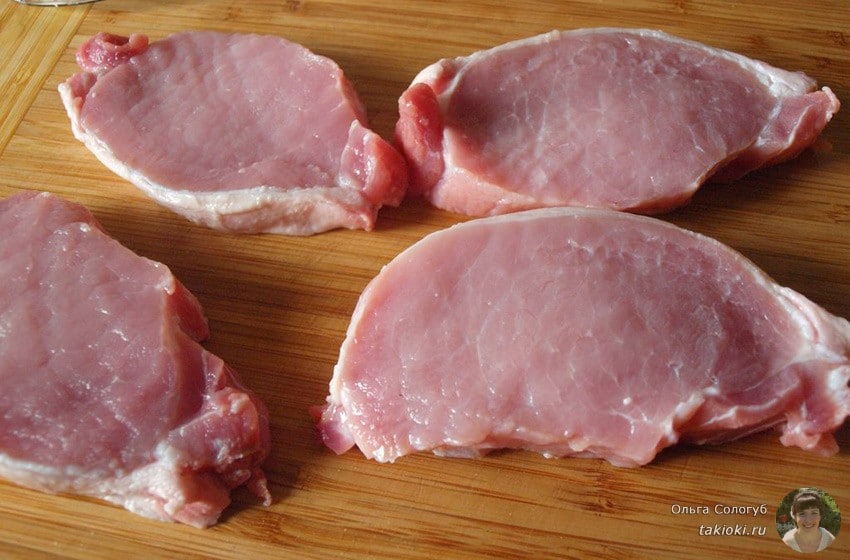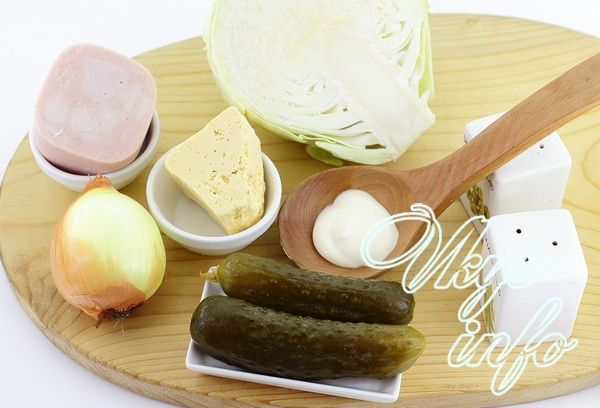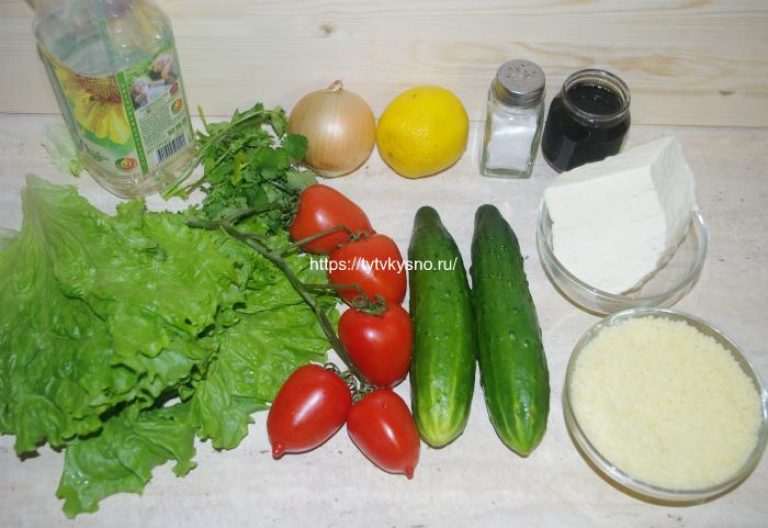Heading “Dairy products”. The most useful dairy products for the body
Milk is called the first product in nutrition, emphasizing its role in clinical nutrition.
Milk - nutrient fluid produced by the mammary glands of female mammals. The natural purpose of milk is to feed cubs who are not yet able to digest other foods. Milk is part of many products used by humans, and its production has become a large industry. Natural milk is an indispensable human food, as it in a balanced state contains food and biologically active substances necessary for the body.
Milk- a product without which it is almost impossible to do in the kitchen. Despite its apparent simplicity, milk is the main component of many of our favorite dishes. And this applies both to milk in its original form, and to products that belong to the category of dairy: cottage cheese, sour cream, kefir, yogurt, etc. Using these products, you can cook a lot of dishes.
Remember all your favorite pancakes, the recipe of which is simply not conceivable without the use of milk or butter. Pancakes are a favorite treat for both an adult and a child. It is very interesting that in the kitchen of any country in the world there are dishes using milk, somewhere it’s goat milk, somewhere milk of a horse or camel. It is interesting that our ancestors made variations of drinks, which were based on this elixir of life. Moreover, among them there are even alcoholic ones, for example, Kazakh koumiss - a drink based on horse milk - belongs to such.
By chemical and biological value, milk surpasses all other products found in nature. According to modern scientific data, more than 200 valuable components are concentrated in milk: 20 amino acids; more than 40 fatty acids; 25 minerals, milk sugar - lactose; trace elements; all types of vitamins currently known; other substances necessary for the body to maintain normal functioning.
In Slavic cuisine there are enough dishes using cow's milk, remember at least cottage cheese pancakes. Thanks to milk, we can experiment, discover new frontiers in cooking and enjoy the diversity of the taste palette. There are many books on dishes made exclusively from milk or dairy products.
Milk soups became quite interesting, and both salty and sweet children's soups, and quite satisfying. Such soups include the classic puree soup with potatoes and mushrooms, or even everyone’s favorite and such different okroshka, which is prepared using yogurt or dumplings, which are dairy products that give this dish an interesting taste
In human nutrition, milk of various lactating animals, mainly cows and goats, is used. In the countries of the Far North, Transcaucasia, Turkmenistan, Mongolia, and others, milk of buffalo, mares, camels, deer, female mules, yak, zebu, and donkeys are consumed as food. By the nature of the proteins, the milk of various animals is divided into casein (casein 75% or more) and albumin (casein 50% or less).
According to its properties, albumin milk is most closely related to human milk and is its substitute. Cow's milk as a substitute is not fully consistent. This is due to the fact that when curdled in the stomach of a nursing infant, cow's milk casein forms coarse, large flakes, while albumin turns into small and delicate flakes, completely digestible.
Goat milk- in its chemical composition it is not inferior to cow's, and in biological value even higher than it, since goat milk contains more highly dispersed proteins, and when it coagulates, more tender flakes are formed. It contains more cobalt salts, which are part of vitamin B12. Goat milk has more vitamins A and B, which the body needs. Despite the fact that goat milk belongs to a number of casein and is much fatter than cow's milk, it is easily digested, does not cause allergic reactions and is recommended for this reason for feeding infants.
Sheep milk one and a half times more nutritious than cow and contains 2-3 times more vitamins A, B, B2. It is widely used for the preparation of yogurt, kefir, cheese, butter and other products. Sheep milk fat contains a lot of caprylic and capric fatty acids, which give the milk a specific smell, which limits its consumption in whole form. Cheese is prepared from it - vats, Ossetian, Tushino, as well as sour-milk products - yoghurt and cottage cheese.
Mare's milk- white, with a bluish tint, sweet and slightly tart in taste. It has 2 times less fat than cow. It belongs to a number of albumin. The high content of lactose, albumin, globulin, vitamin C (6 times more than in cow), the fineness of fat globules give it special dietary value after fermentation in koumiss. By the ratio of protein fractions and the content of lactose, mare’s milk is close to female, therefore, like goat, it’s useful when feeding infants.
Buffalo milk- This is a white viscous liquid with a pleasant taste and odorless. Its biological and nutritional value is very high. It contains more fat, protein, calcium, phosphorus, vitamins A, C and group B than in cow's milk. Buffalo milk is used whole, as well as with coffee, cocoa. High-quality dairy products, famous mozzarella and parmesan are prepared from it.
Camel milk different in specific taste. It contains a lot of fat, salts of phosphorus, calcium. In the desert and semi-desert zones, the population uses camel milk in fresh form, and also prepares from it a nutritious sour milk product shubat and other sour milk products. Its consistency is thicker than cow's.
Yak female milk - Contains more than cow's milk, fat, protein, and sugar. Zebu female milk is close in composition to cow's, but contains slightly more fat, protein and minerals, and slightly less lactose. Milk has a specific smell. Oil and national sour-milk products are prepared from it.
Deer milk- 4 times calorie cow, contains 3 times more protein and 5 times more fat. When using whole reindeer milk for drinking, it is recommended to dilute it with water, since it has such a high fat content that not every person’s stomach can digest it. Such milk is not suitable for baby food.
The population of large cities of the country still consume cow's milk, processed at state-owned dairies. Processing milk in dairies ensures the quality of this product for mass consumption. For immediate use, pasteurized or sterilized milk is used.
Pasteurized milk is produced in the following assortment:
WHOLE called normalized or restored milk with a certain fat content - 3.2% and 2.5%
RESTOREDcalled milk, prepared in whole or in part from canned milk. To obtain reconstituted milk, dried whole milk is dissolved in warm water and kept for at least 3-4 hours for the greatest swelling of proteins, elimination of water taste, and also to achieve normal density and viscosity. The mixture is then cleaned, homogenized, pasteurized, cooled and poured.
FATTED MILK prepared from normalized milk with a content of 6% homogenized fat.
BOILED called milk with a content of 6% fat, subjected to homogenization, pasteurization at a temperature of at least 95 degrees and exposure for 3-4 hours.
PROTEIN MILK contains an increased amount of dry fat-free substances. It is produced from milk normalized by fat content, with the addition of powdered or condensed milk.
VITAMINIZED MILK prepared from whole or nonfat milk enriched with vitamins A, C, D2.
OIL-FREE MILK - This is the pasteurized portion of milk obtained by separation and containing not more than 0.05% fat.
STERILIZED MILK. In taste, smell and color (a specific taste of brown color), it is similar to melted. Available in bottles with a fat content of 3.2% and in bags with a fat content of 2.5; 3.5%.
Cream Is the fatty part of milk obtained by separation. It differs from milk in its high fat content, which makes it highly nutritious. For direct use, pasteurized cream, which is prepared from fresh milk. Get cream on the separators, cream separators
Milk is cleaned of mechanical impurities, heated to 35-40 degrees and sent to a cream separator.
The resulting cream is normalized depending on their type and sent for pasteurization. Cream is pasteurized at a high temperature to give them a more pronounced aroma and a greater guarantee of their bacterial purity, because high fat content reduces heat treatment efficiency.
Dairy products - These are products produced by fermenting milk or cream with pure cultures of lactic acid bacteria with or without the addition of yeast or acetic acid bacteria. Some dairy products are obtained as a result of lactic acid fermentation only; this forms a fairly dense, uniform clot with a pronounced sour-milk taste.
Other products are obtained as a result of mixed fermentation - lactic acid and alcohol.
Sour-milk products are of great importance in human nutrition due to medicinal and dietary properties, pleasant taste, easy digestibility.
These products are produced in a thermostatic or tank way.Pre-milk pasteurized, homogenized and fermented.
With THERMOSTATthe method of fermenting milk and ripening of the product is carried out in bottles in thermostatic and cold chamber. The milk is fermented, mixed, poured into bottles, corked and immediately sent to a thermostat until a sufficiently strong clot forms in the bottles. After the ripening, the product is sent to the refrigerator for cooling and ripening.
AT RESERVOIR In the method, fermentation of milk and ripening of the product are carried out in one tank. During the ripening process, the milk is continuously stirred to break the clot. The product is then cooled and left to ripen, after which it is again mixed and poured into glass bottles or paper bags.
SOAP Is a fermented milk product with an undisturbed clot. It is produced from milk with or without flavoring and aromatic substances. Sugar, honey, vanillin, cinnamon, fruit and berry creams or preserves are used as flavoring substances.
KEFIR is a fermented milk drink of mixed fermentation (lactic acid and alcohol) produced by fermenting milk with kefir fungi. Kefir is in the greatest demand of the population, as it has not only dietary, but also medicinal properties.
SOUR CREAM - it is made by ripening normalized cream. Sour cream has a high fat content from other dairy products. Normalized, pasteurized and homogenized cream is cooled to the fermentation temperature. Then cream and sourdough are mixed and left to ferment. The end of the ripening is determined by the moment when the clot has optimal acidity and strength. Duration of ripening 13-16 hours.
Cottage cheese - a protein fermented milk product produced by staining milk with the use of rennet or with the removal of part of the serum. The cottage cheese contains 14-17% of proteins, up to 18% of fat, 2.4-2.8% of milk sugar. It is rich in calcium, phosphorus, iron, magnesium - the substances necessary for the growth and proper development of a young organism.
Cottage cheese is produced from raw and pasteurized milk. For direct consumption, cottage cheese is prepared from whole normalized or skim pasteurized milk. Get the cottage cheese acid-rennet and acidic method.
The daily diet of almost every person contains dairy products. There is only a small fraction of people in whom milk protein causes an allergic reaction or is diagnosed with lactase deficiency (inability to absorb lactose). For these reasons, they exclude milk and products from it from their menu. However, the predominant part of the world's population does not suffer from such ailments, so it can fully appreciate all the benefits milk nutrition.
The benefits of dairy products
Products made on the basis of milk belong to a complete, complex food, due to which fats (2.7-6.0%), proteins (2.5-4.8%) and carbohydrates (4.0- 5.6%). For example, a liter of milk drunk provides the body with a daily norm of amino acids of animal origin. Of particular importance are microorganisms that support the normal intestinal microflora. As a result of the beneficial activity of lactic acid and propionic acid bacteria, the body's immune defense increases, and the work of the organs of the gastrointestinal tract is optimized. The composition of dairy products includes almost all existing vitamins, as well as immune bodies that inhibit the development of pathogenic microflora. Milk food contributes to the replenishment of minerals, a significant proportion of which are calcium and phosphorus in an easily digestible form.
Healthy Dairy Products for Women
Whole milk - 500 ml.
Butter - 15 gr.
Cheese - 18 gr.
Cottage cheese - 20 gr.
Sour cream - 18 gr.
If it was once believed that adults should limit the consumption of milk, replacing it with lactic acid products, now this myth is completely debunked. Individual lactose intolerance is transmitted at the genetic level and is in no way related to a person’s age. If you often ate milk in childhood without any negative consequences, you can continue to indulge in this delicious and nutritious drink. Numerous studies affecting milk nutrition, only confirm the benefits of such a diet. For example, scientists at Boston University have found a connection between the daily presence of dairy products on the table and a reduced risk of developing uterine fibroids. This disease is often found in women who have crossed a 30-year milestone.
In particular, it was experimentally found that women who consumed more than 4 servings of dairy products daily, the risk of developing benign neoplasms was reduced by 30%. Although the mechanism of this phenomenon has not been precisely explained, it has been proven that women's health is protected by reducing the activity of cell proliferation (tumor cell division). What is no reason to supplement the usual menu with food prepared on the basis of milk? Every woman has something to think about, because dairy products are real helpers in maintaining the beauty of the body. Low-fat yogurt, kefir, fermented baked milk will help in the fight against excess weight and in normalizing the activity of the gastrointestinal tract. Cheeses will become a source of calcium, necessary for hair, teeth and bones. And cottage cheese will prevent liver diseases and improve the functioning of the nervous system.

Do not forget that any lactic acid products have undeniable effectiveness when used in the form of masks for the skin and hair. The famous beauties of antiquity Nefertiti and Cleopatra regularly took a bath filled with a miraculous drink. Goat milk many nutritionists consider the most useful options. He is credited with medicinal properties, and this statement has a solid scientific basis. For example, in goat milk contains more potassium and cobalt (6 times) than cow. The first element is necessary for the normal functioning of the cardiovascular system, and the second is involved in blood formation and regulates the metabolism. Since ancient times, the product has been used to treat consumption, cholelithiasis, various diseases of the joints and skin, as well as to strengthen the immune system. In addition, it is indispensable for people who have an allergic reaction to cow's milk proteins.
Healthy Dairy Products for Men
Men are no less than women need milk nutrition. And often the men's need for dairy products is even greater. For example, the riboflavin contained in them is necessary for athletes and people who regularly experience serious physical exertion. Animal proteins that come in composition of dairy products They are an excellent “building material” for muscle tissue. And potassium prevents the development of cardiovascular diseases, to which representatives of the strong half of humanity are much more susceptible than women. Milk will help lower blood pressure, and cheeses, cottage cheese, sour cream and butter will become sources of calcium, which is involved in the formation and maintenance of bone strength.
Vitamins Contained in Dairy Products

Vitamins that are contained in composition of dairy productsare represented in all existing diversity. Among them, water-soluble and fat-soluble species. In milk and its derivatives, the volume of different vitamins varies. For example, most vitamins A, E, and C are found in hard cheeses, butter, and cream with a fat content of 20%. Vitamins B1, B2 and B3 predominate in milk powder, and B6 and B9 in fat cottage cheese. The vast majority of vitamins H and D are found in plain milk. To get vitamin PP, you also need to drink regular milk.
Diet Dairy Products
Any dairy food products are present in the diet menu. The beneficial effect on the body is directly determined composition of dairy products, as well as the presence in them of cultures of microorganisms that are used in the preparation of fermented baked milk, kefir, yogurt, sour cream, cheese, etc. The type of microorganism determines the taste of the product. For the fermentation of lactic acid products, lactic streptococci, acidophilic or Bulgarian bacillus, kefir fungus are used. Microscopic bacteria and beneficial fungi normalize the intestinal microflora, inhibiting the activity of pathogenic bacteria.

However, dietary foods can only be considered low fat. Therefore, preference should be given to lactic acid products with a reduced fat content or completely fat-free. In order not to doubt the dietary purpose of the product, you need to carefully study composition of dairy productswhich is indicated on the label. It is clear that among the components indicated there should not be preservatives, chemical dyes and flavorings, as well as other food additives that are not comparable with the principles of a healthy diet.
Milk food shown in any form. It is believed that dairy products are the most useful and are better absorbed by the body. Any food prepared on the basis of milk is a balanced cocktail of nutrients necessary for a person. For example, all dairy products due to the high content of calcium are found in the diet for patients suffering from arterial hypertension. The volume of potassium, phosphorus and other trace elements that are contained in a glass of milk satisfies the daily requirement of the body. Non-skim milk is allowed for people with diabetes. With caution, goat's milk, which is more fat than cow's, is allowed to be used in food.

The diet for patients with various pathologies of the urinary tract also includes dairy products (except for hard cheeses). Milk actively removes toxins, therefore, in case of food poisoning with heavy metals, alkalis, acids, alcohol, warm whole milk, drunk in the amount of 1.0-1.5 liters, will help. Heated milk is used to treat sore throats. The best therapeutic effect is achieved by adding honey and butter to it. A glass of warm milk will help to cope with a headache, and kefir and whey have useful properties aimed at getting rid of the effects of an alcoholic hangover.
Milk is the very first product with which a person begins his life. It would seem that what could be better and more useful than dairy products? But it is around milk that the most desperate debate and verbal battles are waged. Some violently defend the right of milk to be called a superfood, the most natural and natural for humans, while others argue that after a certain age, milk only harms.
Some are sure that without milk, people will die, and their opponents insist that milk is simply life-threatening. Which of them is right? Which of them is cruelly mistaken? Let's try to take a closer look at the most common misconceptions about milk through the eyes of an expert.
1. Daily milk intake fully satisfies the body's need for calcium
Everyone knows that milk is the main source of calcium. The consumption rate of this most important microelement is from 800 to 1200 milligrams per day for an adult, and for pregnant and lactating mothers its amount increases to 2000 milligrams. In addition to milk, calcium is found in plant foods (cereals, legumes, nuts, vegetables and fruits) and animal products (liver, beef, veal, poultry). 1 cup of milk contains from 244 milligrams (for skim milk) to 315 milligrams of calcium (for whole milk). Knowing the calcium content in a glass of milk, it is easy to calculate that in order to replenish the daily norm of this microelement with milk alone, you need to drink it all day without stopping and drink a total of 3 to 5 glasses. Theoretically, this is possible, but in practice such a task no longer seems feasible.
2. Calcium is best absorbed from milk, cottage cheese, cheese and yogurt
With its unconditional benefits, calcium is a capricious and difficult to digest trace element. In the human body, both the dissolution of the bone substance with the release of calcium and its deposition in the bone tissue continuously occurs. Calcium comes from food products in insoluble or poorly soluble compounds in water, and already in the process of digestion under the influence of bile acids produced by the liver, calcium acquires the ability to dissolve. Calcium is best absorbed in the presence of protein. With a low-protein diet, its digestibility is reduced by 10%, so the protein contained in dairy products makes cottage cheese, milk, cheese and yogurt products from which it is really easiest for our body to get the necessary calcium.
3. Milk is useless for adults
There is an opinion that milk is only useful for children, and for an adult organism it is absolutely useless. Long-term studies of various domestic and foreign institutes of dietetics provide reliable scientific evidence that people who consume enough milk and prefer butter to different margarines have minimal risk of suffering from many diseases of the immune system. Dairy products saturate the body with vitamins and minerals, being an excellent source of calcium, which is especially important for older people prone to osteoporosis.
4. Milk promotes obesity
Adherents of anti-milk diets are trying to prove that drinking milk inevitably leads to obesity. But people gain weight not from the milk itself, but from the fats contained in it. If you eat sour cream, cream and butter without restrictions, then, no doubt, after a certain time, cholesterol will inevitably increase in the blood, and this, in turn, will lead to the appearance of extra pounds. But if you buy milk with a minimum percentage of fat content, then monitoring the weight will be easier. It is no coincidence that those who want to stay slim are recommended to include skim milk, cottage cheese and kefir in their diet.
5. Farm milk is better than factory milk
Fresh milk "from under the cow" remains sterile for 2 hours due to the content of natural bactericidal substances produced in the cow's udder, but after this period different bacteria can multiply in it, and they won’t be called useful. Draft milk, which is sold in markets or in barrels, can be dangerous, since, on the one hand, it is a nutritious product, but on the other hand, the best environment for the propagation of pathogenic microflora. It is safest to take milk from trusted certified manufacturers who do not separate the purity of their product from their reputation. Pasteurizing milk at a factory at a temperature of 76–78 degrees preserves all the nutrients and trace elements that are found in raw milk.
6. Milk allergy indicates that not everything is okay with him
An allergy can happen to honey, nuts, and a host of other products, which in no way detracts from their benefits. The individual intolerance of lactose, which is responsible for the breakdown of sugar, or increased sensitivity to milk proteins of a relatively small group of people does not give grounds to talk about the general intolerance of milk. On the shelves you can find lactose-free dairy products, and even those who suffer from diseases associated with milk intolerance, with great pleasure drink fermented baked milk and kefir.
7. Sterilized milk is just as healthy as pasteurized milk.
During pasteurization, milk is processed at a temperature of 65 degrees for 30 minutes, 75–79 degrees for 15–40 seconds, or 86 degrees for 8–10 seconds. Thus, milk becomes safe for human health, but retains lactic acid bacteria and all the original vitamins: it is stored for a short time, it turns sour, and sour-milk products can be prepared from it - kefir, yogurt, cottage cheese. Sterilization is the most “ruthless” way of processing raw milk, in which the majority of nutrients are lost. Raw milk is heated and aged at a temperature of 120-130 to 130-150 degrees for half an hour. Sterilized milk does not turn sour, but simply becomes bitter. It is stored for about a year at room temperature.
8. Milk contains antibiotics
Antibiotics added to milk are the most stable and at the same time the most implausible folk fiction. Milk producers have in their arsenal a wide enough range of natural “preservatives” to preserve their product, and they do not need to resort to such at least. At any dairy, there is a laboratory that carefully monitors the quality of raw materials, excluding milk from sick cows that have recently undergone treatment on the conveyor. That is why no substances harmful to humans can get into a sterile milk package either intentionally or by accident.
In the dairy department of the supermarket, the buyer is faced with such an abundance of names and wordings that it is sometimes difficult to figure out what is what. Which product can be considered natural dairy? What is a “curd product” or “sour cream product”? M24.ru will help you navigate among the milk variety.
The Ministry of Agriculture has taken the initiative to make labels on dairy products more understandable to the general consumer. According to the director of the Department of Livestock and Breeding, Vladimir Labinov, the amendments proposed by the department suggest not using such concepts as “dairy”, “cheese”, “cottage cheese” on milk-containing products, that is, on those that use vegetable fat. It is proposed to replace them with words that indicate the consistency of the product, for example, “mashed potatoes”, “pasta” or “souffle”. Labinov notes that this can protect the consumer, and also lead to the fact that prices for natural products will rise, and for milk-containing ones will begin to decline.
While this initiative is under discussion at the Ministry of Agriculture, the Ministry of Economy and the Federal Service for Supervision of Consumer Rights Protection and Human Welfare. If it is approved, then the Technical Regulation of the Customs Union "On the Safety of Milk and Dairy Products" TR CU 033/2013 dated 09.10.2013 No. 67 of 09.10.2013 may be amended. However, now not all milk producers are happy.
“We are not against changes, but against the fact that they are constantly being made to the Technical Regulations. Indeed, previous changes were made recently, last year. Manufacturers have already spent money on changing the packaging. Moreover, legislative instability can adversely affect Russia's investment attractiveness, especially in the face of the ruble devaluation, "said Maria Zhebit, spokeswoman for the National Union of Milk Producers, to M24.ru.
On the other hand, the Association of Peasant Farms and Agricultural Cooperatives of Russia welcomes the opportunity to protect natural products. "It is difficult to comment on what is still under discussion. However, we advocate that natural products be protected. It costs other money," said Vyacheslav Telegin, chairman of the organization’s board.
Types of dairy products
While the decision on the new amendments has not been finalized, let's see what labeling the store may face now. In accordance with the current Technical Regulations, all dairy products, of which there are more than 100 species, are divided into three groups: dairy, milk constituents and milk-containing.
Milk products - those made only from milk, or from dairy ingredients. In their production, neither non-dairy protein nor non-dairy fat should be used. Such products include drinking milk, sour cream, yogurt, cheese, cottage cheese.
Dairy Compound Products have a milk base, that is, they are made from milk or its parts. The milk in them should be more than 50 percent. At the same time, non-dairy components, such as dried apricots, nuts, may be present in them. Dairy products include, for example, cottage cheese with raisins or slices of fruit, or yogurt with banana or crunchy cereal.
Milk Products - These are those that can almost half consist of non-dairy fat. However, milk fat must be present in them, and more than 50 percent non-milk fat is not allowed.
Now these products are labeled with derivatives of dairy terms: cheese, cottage cheese, sour cream.
This is where the confusion begins. The word "curd" we can call the curd mass of natural cottage cheese, sugar, raisins and nuts. The same word will also be used for a milk-containing product in which milk fat is replaced by non-milk. Thus, the confusion of concepts begins.
How to choose dairy products
To avoid the traps of marketers when buying dairy products, Rospotrebnadzor experts recommend carefully inspecting the packaging when buying. It should indicate:
- The product's name. It should be on the front side of the package and be written using a font of at least 3.2 millimeters. If the container has a volume of less than 100 milliliters, the letters must be at least 2.8 millimeters;
- Name and location of manufacturer. It should include the legal address, country or place of origin of the product, as well as the name of the organization where consumers can send their complaints;
- Trademark or mark;
- Net weight;
- The composition of the product, indicating its components.
What to look for when studying the composition:
- Mass fraction of fat, which is indicated in percent, the exception here is fat-free products. At the same time, the mass fraction of fat in the dry matter should be indicated on the packaging for cheese and cheese products;
- The mass fraction of milk fat is indicated on the packaging of milk-containing products;
- The content of microorganisms in the finished fermented milk or fermented product (lactic acid, bifidobacteria and other probiotic microorganisms, as well as yeast in 1 gram of product);
- The content in the finished enriched product of micro and macro elements, vitamins, and other substances that are used to enrich it. Next to the composition, there should be information on what is the daily intake of the substances contained in the dairy product;
- Product expiration date. At the same time, for products with a shelf life of up to 72 hours, the hour, day, month is marked; for products with a shelf life of 72 hours to 30 days - date, month, year; for non-perishable products and canned food - a month, a year.
When reading the information on the packaging, one should pay attention to the storage conditions: it must necessarily explain how to store it after opening. At the same time, the container indicates the standard or technical document of the manufacturer in accordance with which the product is manufactured. And, most importantly, it is worth paying attention to information that relates to its features. For example, information on the use of milk fat substitute should be included in the name of the milk-containing product and should be indicated on the front side of the package, for example: "Sour cream product with milk fat substitute", "Cheese with milk fat substitute".
Those who at least once drank real steam, dairy products from the supermarket may seem at least strange. They have a completely different, unusual taste, which is called "powder". Let's see how it differs from under a cow from products manufactured under industrial conditions. Is it really more beneficial for the body? And how not to run into products of dubious quality in a supermarket?
What is the difference between natural and in-store dairy products?
Since 2013, the Technical Regulation "On the Safety of Milk and Dairy Products" has been in force in the Customs Union. It is intended to protect the lives and health of people, to prevent manufacturers from trying to mislead customers about the quality of products.
The technical regulation lists more than 100 types of dairy products. All of them are combined in 3 large groups:
- Dairy products - drinking milk, sour cream curd. Such products are made from milk or its components, without the addition of non-dairy fats and proteins. The composition may contain additional components that are needed for milk processing.
- Dairy compound products - yogurt with crispy cereal, curds with slices of fruit. These products are also made from milk and its components, which are partially replaced by non-dairy components. The share of milk should be more than 50%, and in ice cream and sweet products of milk processing - over 40%.
- Milk-containing products - sour cream, processed cheese. Such products are made from milk, its components and milk products, but the permissible proportion of milk fat substitute is more than 50%. It is also possible to use non-dairy protein.
The packaging always indicates which group the product belongs to. The highest quality are dairy products. Dairy constituents and milk-containing products are cheaper, but there are no useful substances in them, and the taste may have little in common with the taste of real milk.
How to read the label?
Before buying dairy products, you should always study the label. Please note the following information:
- Name - if the product contains non-dairy components, it should be marked that it is a milk-containing product.
- The standard or technical document of the manufacturer in accordance with which milk is processed. Please note that, unlike GOST, the manufacturer can change the specifications (technical conditions) at his discretion.
- Composition listing all ingredients.
- Mass fraction of fat as a percentage. Cream cheese, cheese products and skim milk products indicate the mass fraction of fat in dry matter as a percentage.
- Mass fraction of milk fat - indicated on the packages of milk-containing products.
- The content of microorganisms - lactic acid bacteria, bifidobacteria and other probiotics.
- The content of micro and macro elements, vitamins and their relation to the daily needs of a person.
A separate issue is the expiration date. Dairy products made from natural milk without the addition of chemicals are always perishable, but in stores they can only be found with great difficulty. If the expiration date is 3 days or more, then the product has preservatives. The longer it can be stored, the more chemistry and less useful components for the body.



















